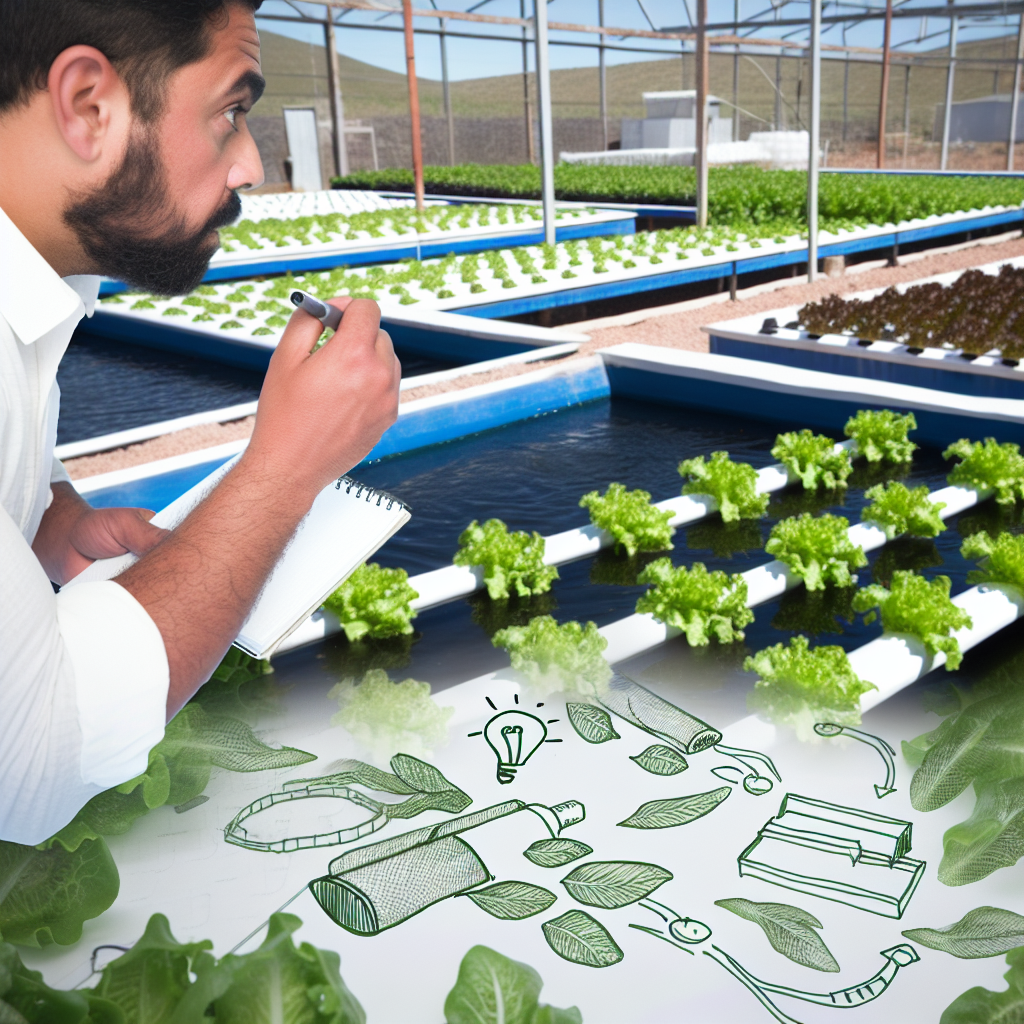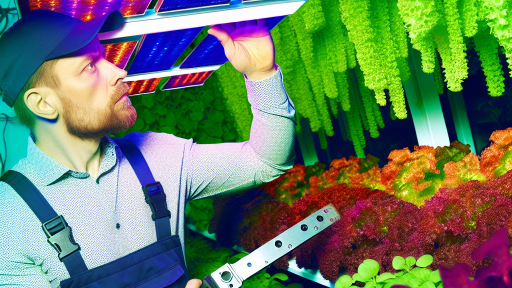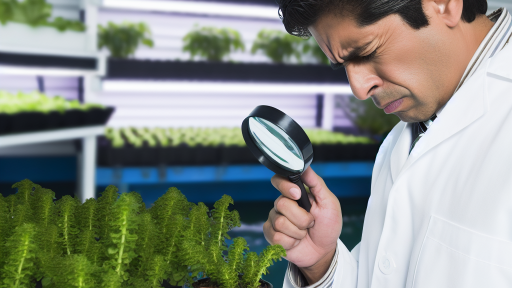Understanding the Basics of Aquaponics
Key Components of Aquaponics
Aquaponics combines aquaculture and hydroponics in a sustainable ecosystem.
This system relies on two main components: fish and plants.
Fish contribute nutrients through their waste.
Plants absorb these nutrients as food for growth.
In addition, beneficial bacteria play a crucial role.
They convert fish waste into forms usable by plants.
Aquaponics systems also require water, which circulates continuously.
This process minimizes water usage compared to traditional farming.
Hence, aquaponics promotes environmental sustainability.
Processes in Aquaponics
Understanding the processes is vital for success in aquaponics.
The nitrogen cycle forms the backbone of this system.
First, fish produce waste, which contains ammonia.
Next, beneficial bacteria convert ammonia into nitrites.
Then, another group of bacteria converts nitrites into nitrates.
Plants absorb nitrates as a primary nutrient source.
Transform Your Agribusiness
Unlock your farm's potential with expert advice tailored to your needs. Get actionable steps that drive real results.
Get StartedThis cycle continues, creating a productive ecosystem.
Additionally, regular monitoring ensures optimal pH and nutrient levels.
Managing these levels promotes healthy fish and plants.
Benefits of Aquaponics
Aquaponics offers numerous benefits for growers.
First, it maximizes space efficiency.
Vertical farming techniques can be integrated into systems.
Second, aquaponics reduces the need for chemical fertilizers.
This reduces potential environmental harm.
Finally, it frequently provides fresh produce and fish.
Consumers value local and sustainably grown food.
Challenges to Consider
Despite its benefits, aquaponics comes with challenges.
Initial setup costs can be high for new businesses.
Maintaining the balance between fish and plants requires expertise.
Moreover, any disruption may affect both populations.
As a result, growers need to be diligent and observant.
Continuous learning about fish and plant health is essential.
Analyzing Market Demand
Understanding Your Target Audience
Identify who your potential customers are.
Consider age, location, and lifestyle factors.
Segment your audience into distinct groups.
For instance, focus on health-conscious buyers.
Look for urban consumers seeking sustainable options.
Analyze their buying preferences and behaviors.
Conducting Market Research
Gather data through surveys and interviews.
Utilize online tools to measure interest levels.
Showcase Your Farming Business
Publish your professional farming services profile on our blog for a one-time fee of $200 and reach a dedicated audience of farmers and agribusiness owners.
Publish Your ProfileExplore existing aquaponics businesses for insights.
Research current market trends and forecasts.
Identify gaps that your business can fill.
Developing Customer Personas
Create detailed profiles of your ideal customers.
Include demographics, interests, and pain points.
Tailor your marketing strategies to resonate with them.
Utilize these personas to refine your product offerings.
Evaluating Competitor Offerings
Examine competitors in the aquaponics space.
Analyze their strengths and weaknesses.
Identify what attracts customers to their products.
Differentiating yourself is vital for success.
Consider innovative features or services to offer.
Adjusting Your Strategy
Be flexible based on market response.
Continuously assess customer feedback and preferences.
Adapt your services or products as necessary.
Stay informed about industry developments and changes.
This proactive approach will help you thrive.
Creating a Scalable Business Model
Understanding Market Dynamics
Market dynamics greatly influence your aquaponics business model.
First, conduct thorough market research.
This research identifies consumer trends and preferences.
Next, analyze your competition to understand their strengths.
Utilizing collected data helps refine your offerings.
Developing Efficient Production Processes
Efficiency in production plays a vital role in scalability.
Implement automated systems for feeding and caring for fish.
Optimize planting schedules to maximize crop yields.
Investing in technology can improve operational efficiency.
For instance, consider installing sensors for water quality monitoring.
Diversifying Product Offerings
Diversity in products can attract a broader customer base.
Introduce different fish species to appeal to various markets.
Furthermore, explore value-added products like packaged fish or salad greens.
This can increase revenue streams and mitigate risks.
Building Strong Distribution Channels
Establishing robust distribution channels is essential.
Partner with local restaurants and grocery stores for fresh produce.
Alternatively, consider e-commerce platforms for direct sales.
As a result, you can reach more customers efficiently.
Additionally, offer subscription services for regular deliveries.
Enhancing Marketing Strategies
Effective marketing is crucial for business growth.
Utilize social media to showcase your aquaponics farm.
Create engaging content that educates potential customers.
Consider hosting tours to attract local interest and inquiries.
Showcase Your Farming Business
Publish your professional farming services profile on our blog for a one-time fee of $200 and reach a dedicated audience of farmers and agribusiness owners.
Publish Your ProfileMoreover, participate in local farmer’s markets for visibility.
Fostering Customer Relationships
Strong customer relationships encourage loyalty and referrals.
Engage with your customers consistently through newsletters.
Offer loyalty discounts or rewards for repeat purchases.
This builds community and trust around your brand.
Always welcome feedback to improve your services continuously.
Gain More Insights: Innovative Approaches To Pest Forecasting For Farmers
Optimizing System Design
Understanding Your Current Setup
Evaluating your existing aquaponics system is essential before scaling up.
Identify strengths and weaknesses in your current design.
This assessment helps determine which areas need improvement.
Consider the types of fish and plants you currently grow.
This will inform your expansion strategy.
Increasing Production Capacity
To scale effectively, you need to increase your production capacity.
Upgrade your growing systems with vertical farming techniques.
This method optimizes space while enhancing yield.
Additionally, expand your fish tanks to support a higher fish population.
Ensure all components are designed for efficient water circulation.
Incorporating Technology
Modern technology can greatly enhance your system’s efficiency.
Invest in monitoring systems for water quality and temperature.
Automation can help manage feeding schedules and nutrient levels.
Consider using sensors that alert you to any imbalances.
These tools help maintain optimal conditions for plants and fish.
Choosing the Right Location
Your location plays a key role in your aquaponics business.
Assess potential sites for access to quality water sources.
Ensure the location receives ample sunlight to support plant growth.
Additionally, consider proximity to markets for selling produce.
A good location can reduce transportation costs and increase sales opportunities.
Sustainable Practices for Expansion
As you scale up, prioritize sustainable practices in your operations.
Utilize renewable energy sources, such as solar power.
This reduces your carbon footprint and operational costs.
Implement water conservation methods to minimize waste.
Finally, educate your staff about sustainable farming techniques.
Building a Strong Network
Networking with other aquaponics growers can provide valuable insights.
Join local farming communities or online forums.
Collaborate on best practices, suppliers, and distribution methods.
A strong network can lead to sharing resources and knowledge.
Leveraging connections can also open new market opportunities.
Find Out More: How to Start an Organic Crop Farm: A Beginner’s Guide
Investing in Technology: Automation and Monitoring Solutions
Importance of Automation
Automation increases efficiency in aquaponics systems.
It reduces manual labor and human errors.
Showcase Your Farming Business
Publish your professional farming services profile on our blog for a one-time fee of $200 and reach a dedicated audience of farmers and agribusiness owners.
Publish Your ProfileAutomated systems enable consistent water quality monitoring.
Moreover, they optimize feeding schedules for fish and plants.
Types of Automation Tools
There are various tools available for automation.
- Automated feeders distribute food on a set schedule.
- Temperature control systems maintain optimal conditions.
- Water pumps ensure proper circulation within the system.
Benefits of Monitoring Solutions
Monitoring solutions provide real-time data about the system.
These systems help detect issues early.
For example, sensors monitor pH levels, ammonia, and nitrites.
Additionally, they track temperature and humidity variations.
Integrating Technology Effectively
Integrate automation and monitoring for maximum efficiency.
Choose systems that communicate with each other seamlessly.
This integration allows for better decision-making.
Consequently, it enhances the overall productivity of the aquaponics operation.
Choosing the Right Technology Providers
Select reliable technology providers for your aquaponics business.
Research their track records and customer reviews.
Consider factors such as support and service offerings.
Partnerships with experienced companies can ensure successful implementation.
Delve into the Subject: Early Detection Methods For Crop Disease Forecasting

Marketing Strategies for Aquaponics: Branding and Digital Presence
Establishing a Strong Brand
Branding differentiates your aquaponics business in a competitive market.
A clear brand identity resonates with your target audience.
Start by defining your brand values and mission statement.
Consider your unique selling proposition to attract customers.
Consistently convey your brand across all platforms.
Creating an Engaging Online Presence
A robust online presence enhances visibility and credibility.
Build a user-friendly website to showcase your products.
Ensure your website is optimized for mobile devices.
Utilize high-quality images and engaging content.
Regularly update your site with blog posts or news articles.
Utilizing Social Media Effectively
Social media platforms provide valuable marketing opportunities.
Select platforms that align with your target demographics.
Share informative content and engage with your audience regularly.
Use these platforms to promote special offers and events.
Encourage customer feedback and interactions to build community.
Implementing SEO Techniques
Search engine optimization improves your website’s visibility.
Conduct keyword research relevant to your industry.
Incorporate these keywords into your website content.
Regularly build backlinks to improve search engine ranking.
Monitor your website analytics to assess effectiveness.
Exploring Email Marketing
Email marketing fosters direct communication with customers.
Build a mailing list from interested prospects and existing clients.
Send out newsletters with updates and offers periodically.
Use personalized content to engage recipients effectively.
Showcase Your Farming Business
Publish your professional farming services profile on our blog for a one-time fee of $200 and reach a dedicated audience of farmers and agribusiness owners.
Publish Your ProfileTrack email performance metrics to adjust strategies accordingly.
Collaborating with Local Businesses
Partnering with local businesses can expand your reach.
Identify complementary companies that share a similar audience.
Conduct joint marketing campaigns or events together.
This collaboration can enhance credibility and attract new customers.
Highlight these partnerships on your marketing channels.
Uncover the Details: Starting Your Own Hydroponic Garden
Building Partnerships: Collaborating with Local Markets and Restaurants
Identifying Potential Partners
Start by researching local markets and restaurants in your area.
Look for establishments that prioritize fresh, sustainable ingredients.
Consider venues that emphasize farm-to-table practices.
Additionally, explore places that feature locally sourced items on their menus.
Approaching Local Businesses
Craft a compelling proposal that outlines your aquaponics system.
Highlight the benefits of sourcing from your business.
Include details on sustainability, freshness, and nutritional value.
Schedule meetings with local chefs and restaurant owners.
During meetings, showcase samples of your produce or fish.
Establishing Mutually Beneficial Relationships
Aim for win-win agreements with local markets and restaurants.
Discuss pricing structures that are fair to both parties.
Offer exclusive deals for regular customers of partner businesses.
Most importantly, emphasize the value of collaboration.
Ongoing Communication and Support
Maintain open lines of communication with your partners.
Regularly check in to ensure their needs are met.
Be receptive to feedback and adjust accordingly.
Furthermore, share updates on your aquaponics operation.
This transparency builds trust and reinforces partnerships.
Engaging the Community
Organize events or workshops focused on aquaponics education.
Collaborate with partners to host tasting events featuring your products.
Leverage social media to promote these community efforts.
Engagement creates a loyal customer base and increases visibility.
Navigating Regulatory Requirements
Understanding Compliance in Aquaponics
Compliance is essential for any aquaponics business.
It helps maintain food safety and quality standards.
Additionally, regulatory adherence enhances marketability.
Start by researching local zoning laws and agricultural regulations.
Reach out to local authorities for specific requirements.
Key Certifications for Aquaponics Businesses
Certifications can boost your business credibility.
Consider obtaining organic certification if applicable.
This certification appeals to environmentally conscious consumers.
You may also look into food safety certifications.
Examples include Hazard Analysis Critical Control Points (HACCP).
These certifications demonstrate a commitment to food safety standards.
Showcase Your Farming Business
Publish your professional farming services profile on our blog for a one-time fee of $200 and reach a dedicated audience of farmers and agribusiness owners.
Publish Your ProfileAgreements and Food Safety Regulations
Establishing agreements with suppliers is crucial.
Ensure that they comply with food safety regulations.
Consider creating a quality assurance plan for your operation.
This plan can identify potential risks and outline preventive measures.
Public health agencies may provide resources on best practices.
Record Keeping and Audits
Maintain thorough records of all operations.
Documentation facilitates transparency and accountability.
Prepare for regular audits by regulatory bodies.
These audits ensure compliance with industry standards.
Consistent record-keeping practices can streamline this process.
Staying Informed about Changes
Regulatory requirements can change frequently.
Join industry associations for updates and networking opportunities.
Attend workshops and seminars on regulatory practices.
Staying informed helps your business remain compliant.
Investing time in learning can save you from future headaches.
Additional Resources
Urban Agriculture and Innovative Production | Home
Energy and water use of a small-scale raft aquaponics system in …




